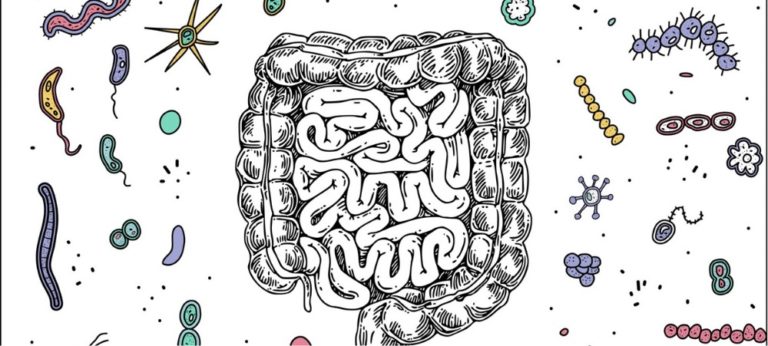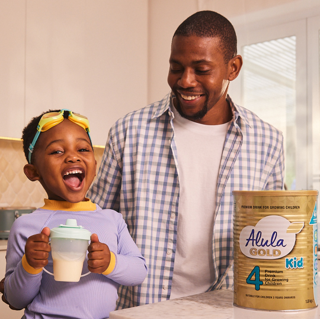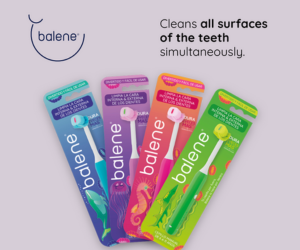Did you know that about 70% of our immune system is housed in our gut (or “gutter” as Mila calls it )? Well to be more precise, your gut lining houses 70% of the cells that make up your immune system. (1)
Did you know that your body actually contains ten times more bacterial cells than human cells? You are essentially a vehicle for the microbiome.(2) (The microbiome is the population of bacteria, fungus and yeasts living in and on your body.)
Did you know that you are fed by your intestines, not your stomach?(3) That’s right, while the stomach holds the food and grinds it down, it is the small intestine that is responsible for most of the digestion and nutrient absorption.(4) Small gaps in the intestinal wall (called tight junctions) allow water and nutrients to pass through, while blocking the passage of harmful substances. (More on this later.)
Did you know that the gut is being called The Second Brain? That there is a direct physical link and communication between your gut and your brain (called the gut-brain axis)? (5)And that your gut produces 95% of your serotonin (you know, the chemical / neurotransmitter that plays crucial role in mood, anxiety, and happiness)? (6) (7)
Four very good reasons why maintaining a healthy gut is so vitally important.
But first, what are we talking about when we talk about the “gut”?
“The digestive system is a group of organs that work together to convert food into energy and basic nutrients that feed the entire body; it’s the foundation of good health. This amazing system includes a combination of nerves, hormones, bacteria, blood and the organs of the digestive system that work together to complete the intricate task of digesting the foods and liquids that we consume every day.” – Dr. Axe
The gut begins at the mouth and ends at the anus and includes the mouth, spleen, stomach, liver, gall bladder, pancreas, small intestine and colon.
So, when we talk about taking care of the gut, or healing the gut – we need to consider all these organs.
Unfortunately for most of us adults, years of chronic stress, environmental toxins, inadequate sleep, lack of regular movement, antibiotics and other pharmaceutical drugs as well as a nutritionally deficient diet, or one full of sugar, allergens and additives has left us with gut dysbiosis and/or leaky gut. If this is the case then before you can maintain a healthy gut, you need to repair yours.
Before we get to the gut restoration protocol, here are some
Definitions
Gut Dysbiosis: there is an imbalance in the number of good bacteria to bad bacteria. That is, the number of “bad” bacteria outweighs the good. If gut dysbiosis is left uncorrected, pathogens will be able to create holes in the intestinal lining (known as Leaky Gut).
Leaky Gut: When the tight junctions of the intestinal walls become loose or are damaged, the gut becomes more permeable (leaky), which may allow bacteria, toxins and partially digested food particles to pass from the gut into the bloodstream. This can lead to widespread inflammation and trigger an immune system response (8).
Probiotics: Probiotics are the so-called “good” microorganisms inside your gastrointestinal tract. They aid in digestion help you digest your food, produce energy, and produce important biological chemicals like serotonin and dopamine (needed for brain function), and they help you detoxify and eliminate toxic exposures. Like all living things, probiotics must be fed in order to remain active and vibrant. (9) (10)
Prebiotics: Prebiotics are the food that probiotics need to thrive. They are indigestible carbohydrates and plant fibres, or at least indigestible to us, that reach the colon intact and selectively feed many strains of the beneficial bacteria that live there. (11)
THE 7 R’S OF GUT HEALING
On my own gut-healing journey (and in my typically Type-A overachiever manner) I have added to the 5R protocol for digestive healing developed by the Institute of Functional Medicine.
The 5R protocol simplifies the complex interactions in gastrointestinal health into five tasks. I have added an additional one at the beginning and end that I have found to be valuable in my own healing journey.
My 7R’s of Gut Healing are:
- Rest
- Remove
- Replace
- Repopulate
- Repair
- Rebalance
- Retain
Rest
Twice a year I embark on a fast of some sort (usually a 7-day vegetable juice fast, although last autumn I added bone broth). The various benefits of fasting are now well documented. Fasting reduces stress and inflammation in the gut by giving it a break from digesting food, allowing it time to “heal and seal” the lining. Fasting also helps to correct gut dysbiosis by starving the “bad” bacteria.
My first ever 7-day juice fast was accompanied by daily colonics. While the idea of this freaked me out to start with (as it may you), the benefits outweighed my embarrassment! But if colonics are not something you are comfortable with, and you haven’t mastered the art of coffee enemas yet (yes they are a thing!), then I highly recommend Good Health Total Body Cleanse product combo which was recommended to me by Lucy (from VidaLife) during my most recent fast, and I can personally vouch for its effectiveness.
You see, when you fast and rest your digestive system, your body is going to go into cleaning mode – as in, detox. It is vitally important to remove the toxins and debris of decaying parasites and pathogens by keeping your bowel moving as well as support two of your other elimination channels namely your liver and kidneys.
Remove
You want to remove anything that could be irritating to the gut such as:
- Inflammatory foods. This includes gluten, sugar, dairy, corn, soy, eggs, grains, alcohol, caffeine, processed food, food additives, and your own personal food intolerances.
If this has you wondering “What-on-earth CAN I eat?” I highly recommend The Whole 30 – a 30-day quest with meal plans, recipes and shopping lists delivered to your inbox by Real Plans. - Medications. Over-the-counter medications (such as aspirin and ibuprofen) are known to cause digestive dysfunction, as do prescription medications. (12)(Only stop prescription medications under the supervision of your medical practitioner!)
- Stress. Stress causes a biochemical reaction by releasing a hormone called cortisone into your blood stream. Too much cortisol can cause inflammation in the digestive tract. (13)
- Infections. One needs to actively treat the gut dysbiosis. While an elimination diet would address things such as Candida overgrowth over time, other bacteria, parasites and pathogens require targeted treatment with anti-parasitic, antibacterial and anti-fungal herbs and supplements.I love heading to my pantry to find medicine The following foods and herbs may naturally get rid of parasites and assist in keeping them at bay after using natural or pharmaceutical treatments:
– pumpkin seeds
– sunflower seed
– papaya seeds
– onion
– garlic
– pineapple
– turmeric
– fermented foods
– coconut
– cloves
– cinnamon
– oregano
I recommend doing a parasite cleanse/treatment twice a year and then use the foods listed above as maintenance in between treatments. Really, you do not want parasites to get the upper hand. Nor do you want them enjoying the wholesome foods you make and supplements you spend money on before you get the chance to benefit from them (yes, its gross – but true! They eat what you eat, before you get a chance to absorb the nutrients from it!).
You can use Paraherb to address parasites and DNA Biopharm CandidaFast is great for gaining the upper hand over Candida. But remember, a low-carb / sugar-free lifestyle is necessary if you are prone to Candida overgrowth (12).
Replace
The body absorbs nutrients – not food. Let me rephrase that – the body is fed by nutrients, not food.
When one truly understands this not only will your food choices change but you will also understand what a complex system the digestive system is. It has to take foods and break them down into their individual components/nutrients for us to absorb: for example breaking protein into amino acids. This “breaking down” process requires digestive enzymes, hydrochloric acid in the stomach and bile.
Again a lifestyle of chronic stress, vitamin deficiency, medications, infections and other health conditions can result in low levels of digestive enzymes and a deficiency of hydrochloric acid in the stomach. (14) (15) Fear not, may very well have a pantry cupboard or fruit basket with the medicine you need!
Replacing Digestive Enzymes
Here are my favourite digestive enzyme-rich foods:
- Papaya and papaya seeds – not only do these seeds have powerful anti-bacterial and anti-inflammatory properties and get rid of parasites, but they also contain high levels of the digestive enzyme papain which assists in digesting proteins. (16) Now that I know that value these seeds hold, I never throw them out with the peels! I dehydrate them and store them in a pepper grinder. Then grind them over our food instead of pepper
- Pineapple – Pineapple is one of the richest sources in the world of the enzyme bromelain. Bromelain, like the papain found in papaya, is a protease enzyme so it also breaks down protein into its building blocks. (17)
- Mango – Mangoes contain the digestive enzymes amylase – a group of enzymes that break down complex carbohydrates into sugars like glucose and maltose. (18)
- Raw Honey – raw honey has a variety of digestive enzymes.
Other foods known for their digestive enzymes include: banana, avocado and fermented foods such as sauerkraut, kimchi and miso. Eating some of these foods as a starter or beginning your meal with them, will assist with the digestion of the meal.
Increasing stomach acid
Foods which help increase stomach acid levels include sauerkraut, kimchi and apple cider vinegar. You can drink 1 tablespoon of apple cider vinegar in a glass of room temperature water before a meal. Or add sauerkraut as a side to your meal.
If you are eating out, at work or on the go, you can support your system with the initial stages of digestion by supplementing with Sfera Digest It (a digestive enzyme blend) or Viridian High Potency Digestive Aid (a combination of betaine hydrochloride and digestive enzymes).
While the digestive enzymes and increased stomach acid will help you digest your food better so that you get more nutrients from it, you may need to add a multivitamin too since digestive conditions can affect the absorption of nutrients such as B12, iron, calcium, magnesium and zinc.(19)
Repopulate
To reinoculate your gut with good bacteria, fermented foods are king! There is such a wide variety to choose from and they are so easy and cost-effective to make at home. From sauerkraut, kimchi, and gherkins to kombucha and kefir (there’s even dairy-free water-kefir!).
Keen to try? If you sign up to my mailing list via my website, you can download the Mila’s Meals Winter Essentialsrecipe collection which has my recipes for: Sauerkraut, Dilly Carrots, Spicy Kimchi, Good-For-You Gherkins and Bubbling Berries! (+ other immune boosting essentials.)
But if brewing, scobies and bubbling jars of cabbage are not your thing, these ready-made naturally fermented unpasteurized fermented foods are easily found in all health food stores.
And even though Mila and I do enjoy a wide variety of fermented foods and drinks on a regular basis, we still supplement. This is the probiotic we are currently using – it is part of Mila’s dental protocol (more on that in another blog post!).
Thing is… probiotics are living breathing organisms – what do they eat? Yes, in order to maintain a thriving microbiome, we need to feed the organisms (that feed us). We do this with prebiotics.
“Prebiotics are indigestible carbohydrates, or at least indigestible to us, that reach the colon intact and selectively feed many strains of beneficial bacteria. Prebiotics are generally classified into three different types: non-starch polysaccharides (such as inulin), soluble fiber (including psyllium husk and pectin), and resistant starch (RS).” – Dr. Amy Nett
Where do we find these?
Sources of inulin include: raw chicory root, raw jerusalem artichoke, raw dandelion greens, raw garlic, raw leeks, onion, flaxseeds, baobab fruit, raw cacao, seaweed, agave plant and green banana.
Sources of soluble fibre include: oatmeal, beans, apples, pears, strawberries, nuts, flaxseeds, psyllium, cucumbers, and celery.
Yes I hear you – fussy-eater toddlers (and even their parents) are not going to feast on many of the foods listed above! Luckily there are clever people making clever products like this one NOW Inulin powder . Made from the Blue Agave plant, it adds a mild sweetness to foods and drinks, but has a very low glycemic index and will not negatively impact serum glucose levels.
There is, however, a source of prebiotics that will be happily gobbled up by most and, current research is showing this one as uniquely beneficial. It is… Resistant Starch!
Resistant starch is a type of starch that is not digested in the stomach or small intestine so it reaches the colon intact. Here bacteria (probiotics) attach to it and digest, or ferment, it.
Why is this a Resistant Starch so beneficial?
I’ll hand over to Dr. Amy Nett to answer that:
“Resistant Starch intake allows for increased production of butyrate by our gut microbes. Butyrate acts as a powerful anti-inflammatory agent for the colonic cells, and functions to improve the integrity of our gut by decreasing intestinal permeability and therefore keeping toxins in the gut and out of the bloodstream.” (20)
(Resistant starch also helps to lower blood glucose levels and improve insulin sensitivity – you can read more about that here.)
Different types of resistant starch can be found in in grains, legumes and seeds and cooked and cooled rice, cooked and cooled potatoes, and cooked and cooled properly prepared (soaked or sprouted) legumes. So… add rice salads, potato salads and bean salads to your weekly menu!
If you are on a low carbohydrate diet or don’t tolerate grains and legumes well, you can add resistant starch to your diet in the form of potato starch (NOT potato flour) without adding digestible carbohydrates. (21) Try adding some to your morning smoothie, or sprinkle over your granola. Start with a ¼ teaspoon / day and gradually increase to 2-4 tablespoons.
Start slow!
When repopulating your gut microbiome it is important to start slow – both with the prebiotics and probiotics.
Prebiotics may initially cause increased gas and bloating as your gut flora changes and adapts. If you experience marked discomfort, decrease the amount you’re taking for a few days until your symptoms resolve, and then try increasing again gradually.
Adding probiotics to your diet may cause what is known as a “Candida Die-Off” or Herxheimer’s reaction. It’s nothing to worry about – actually it means goods things are happening – but you feel worse before you feels better! As the yeast or Candida and other pathogens die off they release toxins and as a result you may experience cold and flu symptoms, nausea, headache, fatigue, dizziness, bloating, gas, constipation or diarrhea, and skin breakouts or rashes. If the symptoms are unmanageable, slow down on the probiotics until you are feeling better.
Repair
Repairing the lining of your gut takes time, so commitment and patience is needed. Always remember – it took time for this dis-ease to be created, it will take time to overcome it.
It took me two years of drinking bone broth and supplementing with LGlutamine daily (in addition to an allergen-free, nutrient-dense, easy-to-digest diet) to heal my gut. I felt it was healed when my eczema did not flare up within minutes me eating an allergen.
I could write a whole separate blog post (and book!) on bone broth and what an elixir it is! Please download the Mila’s Meals Winter Essential Recipe collection from my website. In it, you will find my introduction to bone broths as well as two of my bone broth recipes.
If you are short of time, or freezer space, give Farmer Angus Bone Broth a try. You won’t be sorry! Bone broth is rich in amino acids that quite literally plug the holes or “leaks” in your gut by repairing damaged cells and building new tissue.
In addition to bone broth and LGlutamine, other vitamins, minerals and herbs which are beneficial to healing the lining of the gut include: Omega-3 fatty acids, zinc, vitamins A, C, D and E, aloe vera, slippery elm and collagen. (22)
Rebalance
You’re on the home stretch now! This is really more about ensuring that all your hard work does not unravel.
The impact of stress on your health should not be underestimated. Its effects are significant and far reaching but in terms of your gut – well, stress literally pokes holes in it! It is vitally important to rebalance your lifestyle and “manage” stress. Again, this is a topic for a whole other blog post – but in brief:
- Ensure you get at least 8 hours good quality sleep in a dark room
- Move your body everyday (some may call this exercise but putting on some music and dancing in your living room, or jumping on the trampoline with your kids is as valuable!)
- Spend time in community (that is, in conversation and presence with people you admire, love and respect)
- Spend time in nature – barefoot and in the sunshine
- Give thanks for all the blessings and abundance in your life.
Retain
Easy… stick to a wholefood, nutrient-dense, easy-to-digest wholefood diet and take your daily maintenance supplements!
While this all this may seem like a mountain to climb, time-consuming or expensive – ask yourself… how challenging, time consuming and expensive is ill-health?
Can you afford to NOT restore your gut health?
I’ll leave you with this quote…
Problems in our gastrointestinal (GI) tract can cause more than just stomach pain, gas, bloating or diarrhea they can be the root cause of many chronic health problems. Gut imbalances and leaky gut have been linked to hormonal imbalances, autoimmune diseases such as rheumatoid arthritis and hashimotos thyroiditis, diabetes, chronic fatigue, fibromyalgia, anxiety, depression, eczema and rosacea, just to name a few. – Dr Amy Myers
This blog post was written for and first appeared on VidaLife















Leave a Reply